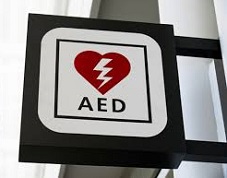It’s estimated that one in every 500 kids has an undetected heart condition, and often the first sign is sudden cardiac arrest.
WE’RE RAISING AED AWARENESS
 Time is critical: In most cases the question of life or death is determined before professional help arrives.
Time is critical: In most cases the question of life or death is determined before professional help arrives.
We can help protect the safety and well-being of our children by raising awareness about automated external defibrillators – AEDs — in schools as well as by urging school districts to implement Public Access Defibrillation programs. The California State PTA supported 2012’s Senate Bill 1436, which provides training, placement and notification requirements for AEDs in K-12 schools, and 2014’s Assembly Bill 2217, which encourages and provides funding options for schools to have AEDs.
SECONDS COUNT WITH SUDDEN CARIDAC ARREST
Sudden cardiac arrest is an electrical malfunction of the heart, which can happen to anyone, at any time with no warning. Usually the first sign is collapse. Brain damage begins within four to six minutes. With seconds counting, the only effective treatment for SCA is defibrillation.
An AED is a simple, small, portable device approved by the U.S. Food and Drug Administration for use by anyone – even passersby. The AED is a computerized medical tool that can not only check a person’s heart, but can also try to shock it back to a normal rhythm. It can help save the life of someone suffering sudden cardiac arrest. By using simple voice prompts, lights and text messages to tell the rescuer the steps to take, AEDs are made to be very accurate and easy to use.
For information on AEDs and to help implement Public Access Defibrillation programs in your school and community, please contact your local PTA.